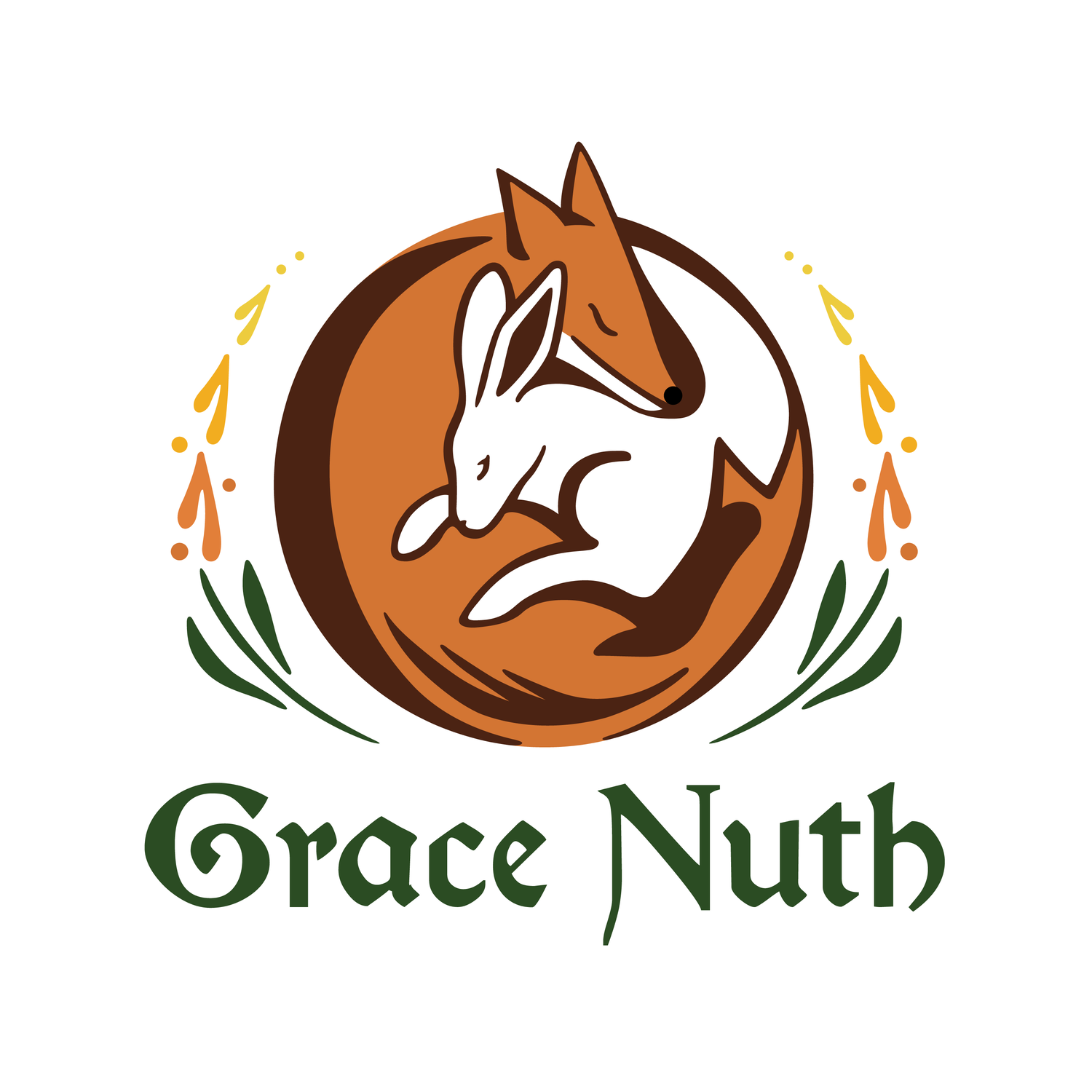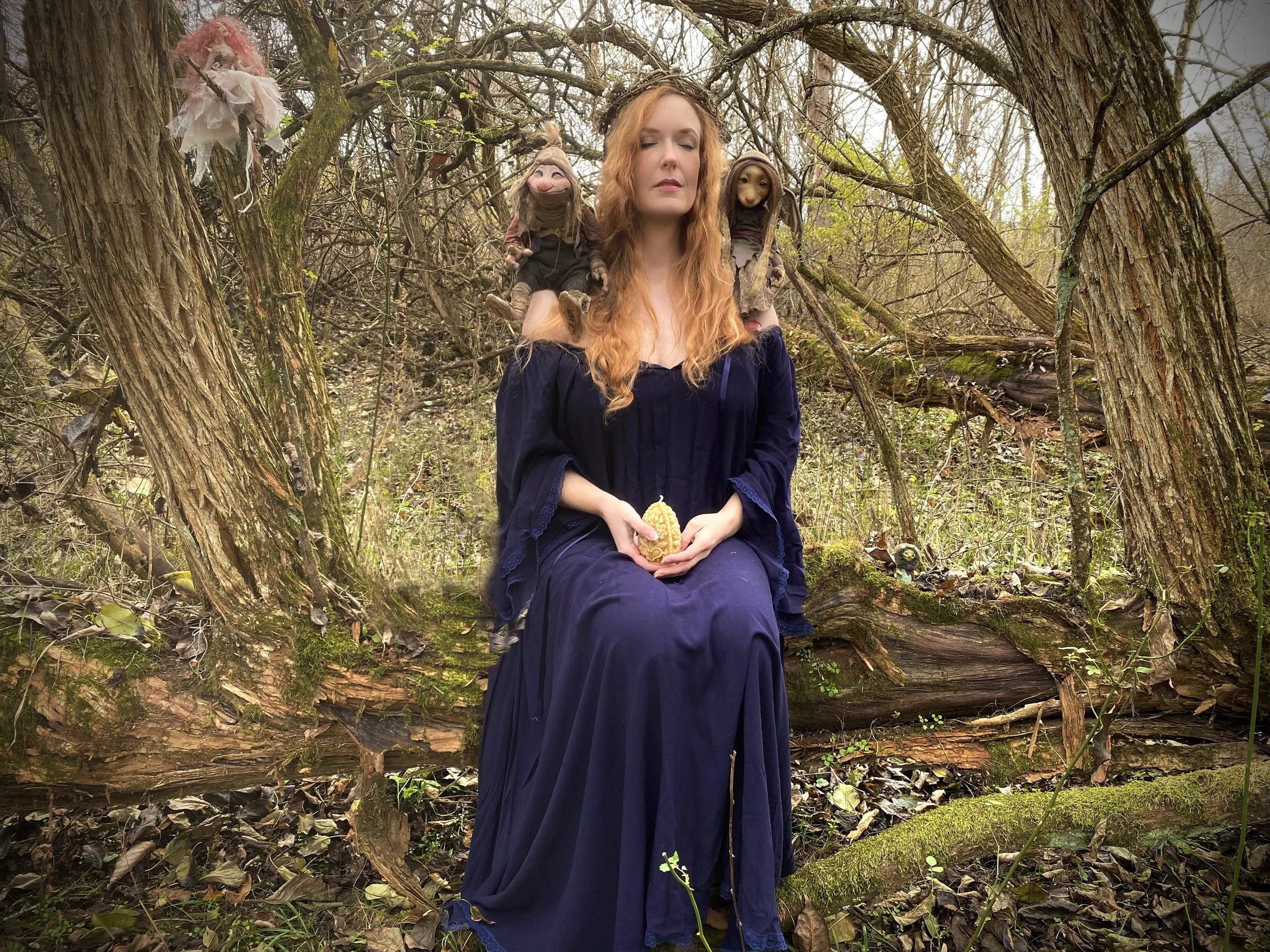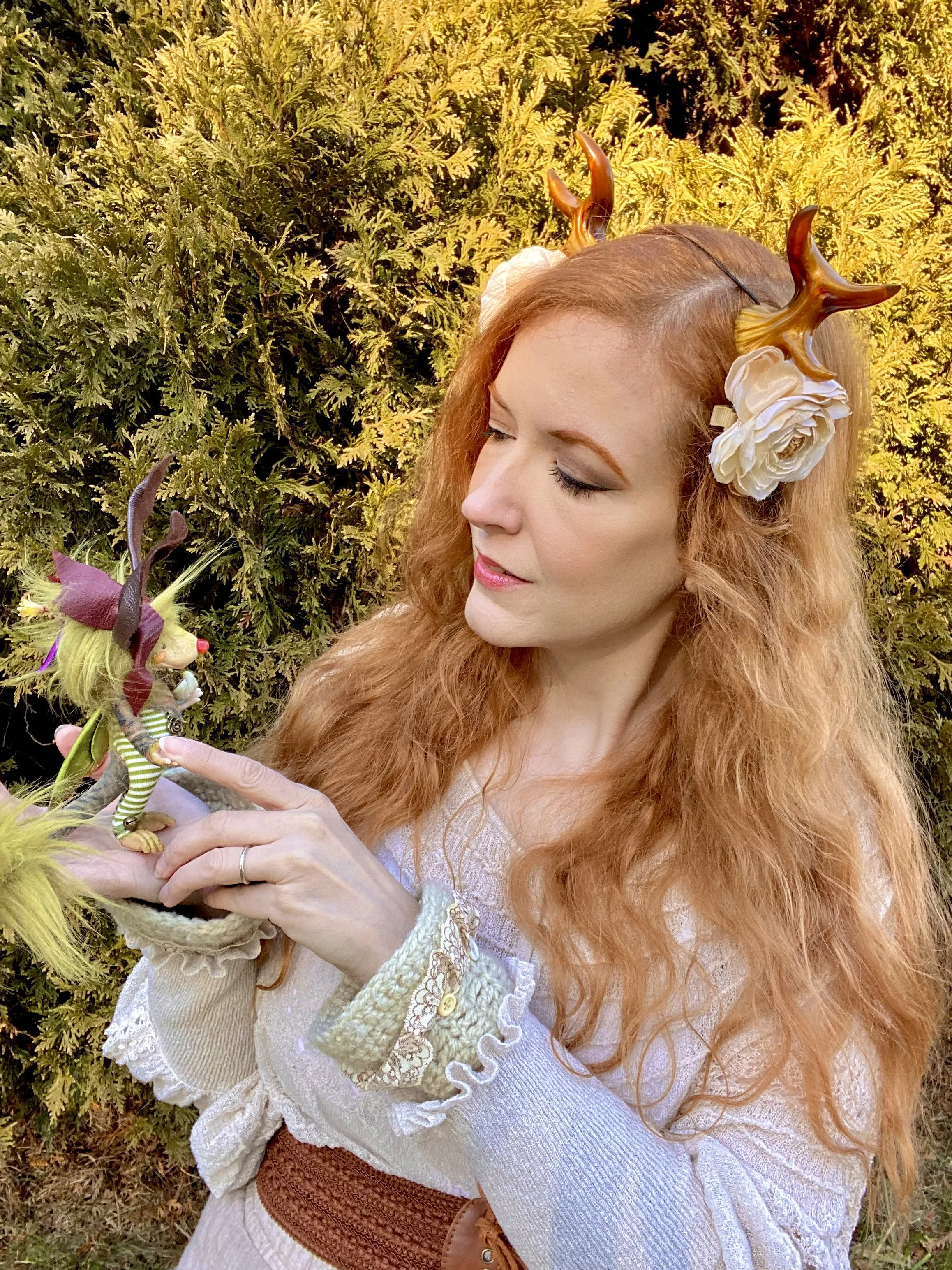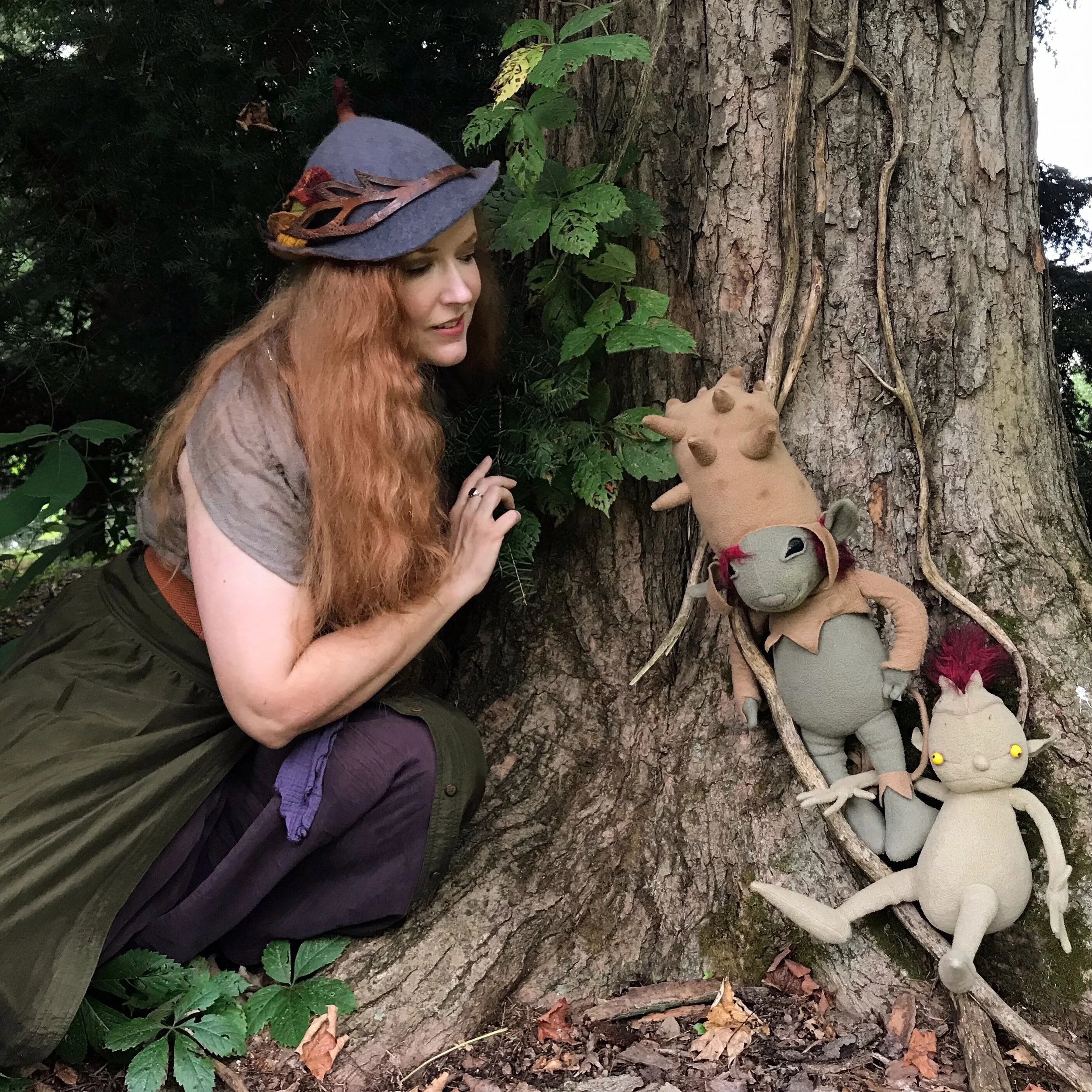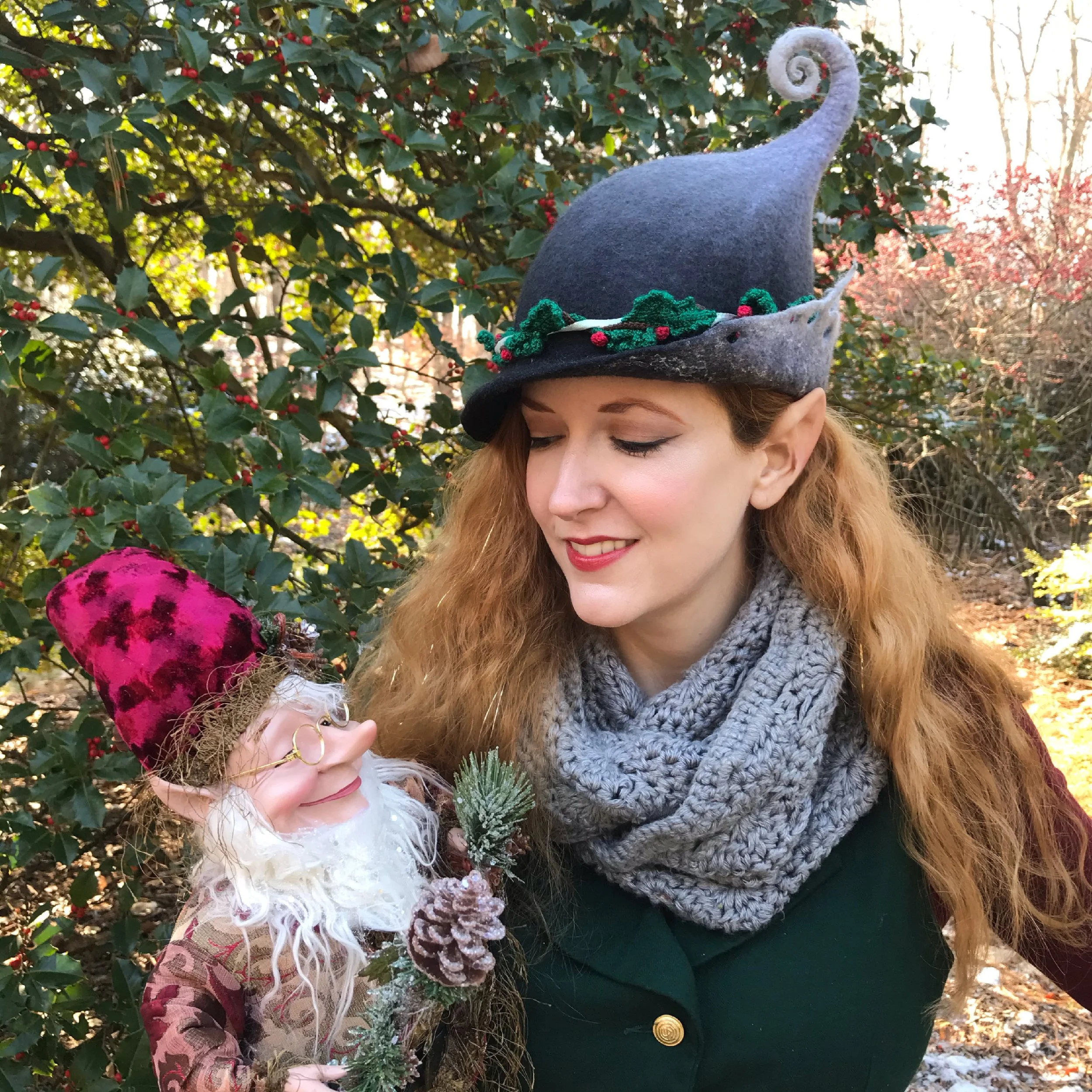Faerie is not a Monoculture
/Sometimes we really can learn a lot from children's shows. I adore the cartoon, Hilda, and just finished watching the newest story (a movie called Hilda and the Mountain King) on Netflix. And you know, it made me think.
One of the storylines in the film involves a troll woman teaching Hilda to break down the stereotypes she has been taught about trolls. She discovers that trolls do indeed keep hoards as she had been told, but each troll wants to hoard different things, from soft furnishings to teapots and mugs. At another point, the trolls Hilda is eating with have to retreat into the mountain because they catch the scent of other trolls wanting to steal their food. "Don't you all get along?" Hilda asks. "Just like all of you humans get along, yes?" the troll woman replies with irony.
This got me thinking about the ways in which we describe the fey. Rusalka are malicious. Trolls love rocks and earth. Pixies sleep in flowers. etc. etc. Of course it's good to have general knowledge of the fey, where to find them, how they may behave…but in my own experience, and among my friends, the realities are about as nuanced, if not more so, than the human world. And far more complicated than any book can teach.
Among the fey guardians of my home, I have three trolls. One of them loves green growing things more than anything in the world. Another secretly plants root vegetables in strangers' gardens at night and we all pretend we have no idea what he's doing. Both of them have a general admiration for rocks and dirt, but prefer things that are alive and growing. They aren't your typical trolls, and I wouldn't want them to be.
Indeed, even though Brian Froud's best known (and one of his earliest) book Faeries is about educating people on types of faerie beings, most of his latest artistic releases focus not on generalities and broad descriptions, but on specific stories of specific individuals.
I am starting to really believe that this is the best way to approach Faerie. As my dear friend Bryonie Arnold just said in a recent conversation about safety when dealing with fae, "I don't believe in faerie danger. I believe in human folly, selfishness, greed. The faeries know a true heart, if you have one -- no need to fear. Of course there are tricksters and entities we always have to be careful of. And never do magic without a clear intention and a circle of protection, inviting only those with our best interest at heart in. But mostly, if faeries are showing up - you should be scared to ignore them, not scared of them."
The word "Faerie" is even more diverse than the word "human," and we all know how many different kinds of humans there are. So even though it is good and right to have a knowledge of types of fae, faerie lore, of faerie cultural norms, and of faerie protections, when we actually deal with or seek interaction with the fey, I think it's best to focus on the fact that you are interacting with one faerie, one being. And they do not have to represent all of Faerie, or even all of trolldom, or Sidhe-dom, or pixiedom. They are who they are. Just them. And it is by far the best to get to know them as an individual.
I suppose approaching Faerie this way makes sense to me too, because racism and stereotyping are ways of falsely assuming that the foreign is a monoculture. So why do we assume that all goblins mean us harm? That there couldn't be an asexual satyr? Or a redcap who faints at the sight of blood?
This has opened up the world of Faerie for me, to really put into words what I've felt for a long time, ever since my two dear trolls came into my life. The first night I had Adley at the house, I gifted her with a hagstone. What would a troll like better? I told myself. And she still keeps it with her and admires it. But now she has flower crowns I switch out for each season. And at this moment? She's holding a sheaf of dried autumn foliage. Because she is not every troll, she’s her. And aren't I so so thankful to be able to listen, and learn her story! And to not let my assumptions about what she should be stop that from happening.
